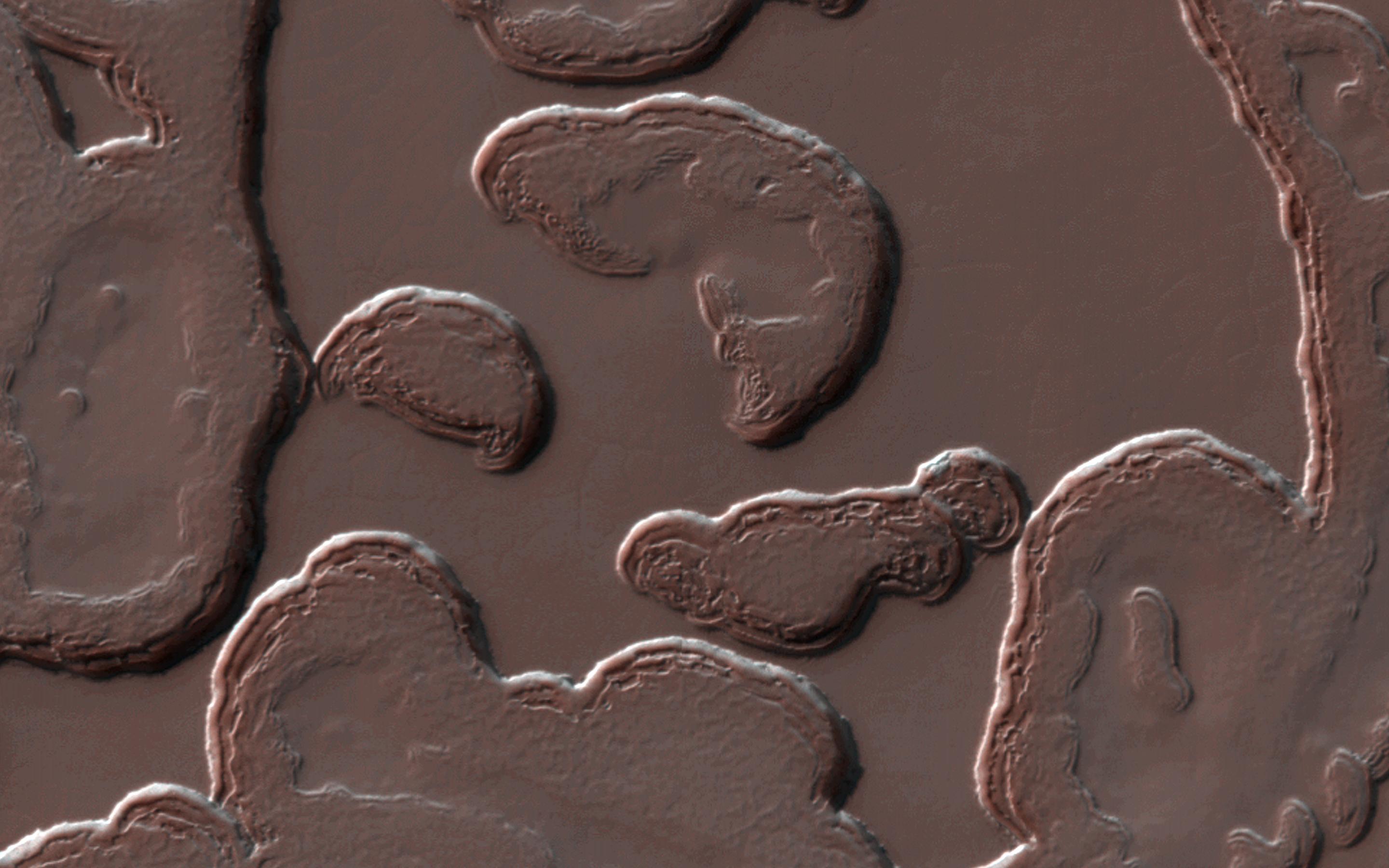
|
Dramatic Changes over the South Polar Residual Cap
- Click the image above for a larger view
- Full-Res JPEG (2880 x 1800) (368.5 kB)
- Full-Res TIFF (2880 x 1800) (12.6 MB)
Caption:

Map Projected Browse Image
Click on image for larger version
The South Polar residual cap is composed of carbon dioxide ice that persists through each Martian summer. However, it is constantly changing shape.
The slopes get more direct illumination at this polar location, so they warm up and sublimate, going directly from a solid state to a gaseous state. The gas then re-condenses as frost over flat areas, building new layers as the older layers are destroyed. This animation compares a small subarea to the same locale imaged in 2009.
The map is projected here at a scale of 50 centimeters (19.7 inches) per pixel. [The original image scale is 49.0 centimeters (19.3 inches) per pixel (with 2 x 2 binning); objects on the order of 147 centimeters (57.9 inches) across are resolved.] North is up.
Background Info:
The University of Arizona, Tucson, operates HiRISE, which was built by Ball Aerospace & Technologies Corp., Boulder, Colorado. NASA's Jet Propulsion Laboratory, a division of Caltech in Pasadena, California, manages the Mars Reconnaissance Orbiter Project for NASA's Science Mission Directorate, Washington.
Cataloging Keywords:
| Name | Value | Additional Values |
|---|---|---|
| Target | Mars | |
| System | ||
| Target Type | Planet | |
| Mission | Mars Reconnaissance Orbiter (MRO) | |
| Instrument Host | Mars Reconnaissance Orbiter | |
| Host Type | Orbiter | |
| Instrument | High Resolution Imaging Science Experiment (HiRISE) | |
| Detector | ||
| Extra Keywords | Color, Map | |
| Acquisition Date | ||
| Release Date | 2018-10-15 | |
| Date in Caption | ||
| Image Credit | NASA/JPL/University of Arizona | |
| Source | photojournal.jpl.nasa.gov/catalog/PIA22729 | |
| Identifier | PIA22729 | |
